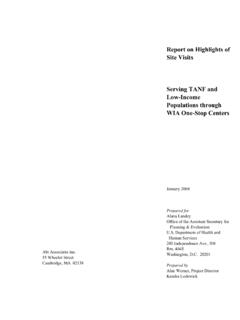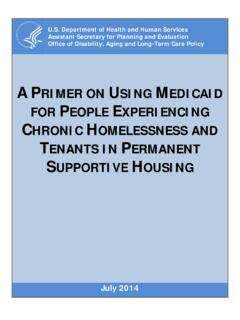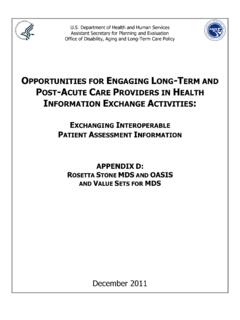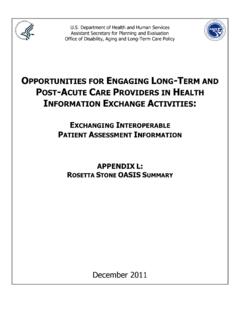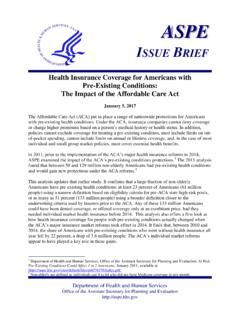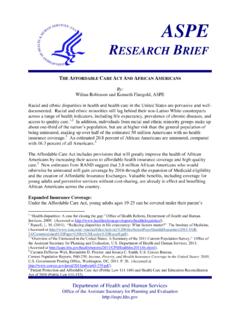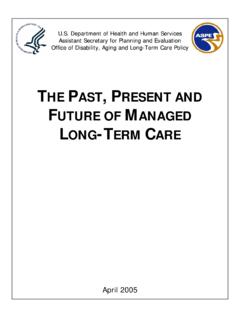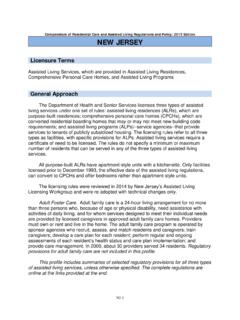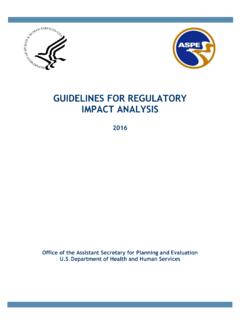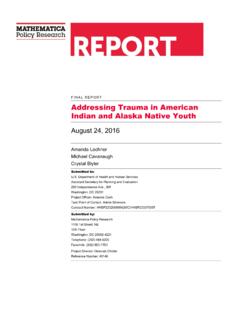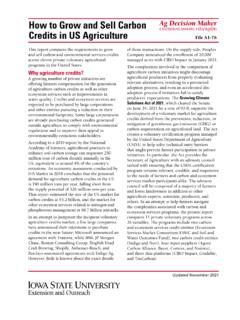Transcription of HP -2021 19 Overview of Barriers and Facilitators in COVID ...
1 August 2021 RESEARCH REPORT 1 advv HP -2021 -19 Overview of Barriers and Facilitators in COVID -19 Vaccine Outreach As the nation responds to the Coronavirus Disease of 2019 ( COVID -19) pandemic, this report provides an Overview of lessons learned from vaccine programs, presents evidence on COVID -19 vaccine outreach, and discusses several examples of programs that could serve as potential models for designing new vaccine outreach strategies. Aldren Gonzales, Euny C. Lee, Violanda Grigorescu, Scott R. Smith, Nancy De Lew, and Benjamin D. Sommers KEY POINTS Recent research estimates that the COVID -19 vaccination program may have prevented roughly 279,000 deaths through May Available evidence supports multipronged strategies for COVID -19 vaccine outreach and the importance of tailoring messages for specific audiences.
2 An Overview of existing initiatives identified successful examples of COVID -19 vaccine outreach strategies that were implemented as part of federal or state public health programs. High COVID -19 vaccination rates were found with some vaccine outreach initiatives carried out through the Federally Qualified Health Centers (FQHC s), Indian Health Service, Medicaid program, National Institutes of Health, and several state public health efforts. Multiple federal agencies have implemented community-based vaccination programs resulting in trends towards higher number of vaccinations. Typically, these programs are multipronged and include community and stakeholder engagement, data collection and analysis, and financial support.
3 Examples of vaccine outreach innovations include new ways of using data, social media, and ways to address structural Barriers such as home vaccinations through emergency medical service providers. Evidence-based tools for designing and implementing successful vaccine outreach programs are freely available from government agencies, professional societies, and non-profit organizations. INTRODUCTION Fewer than nine months after the FDA s emergency use authorization (EUA) of three vaccines to prevent COVID -19, many cities, states, and communities have achieved high COVID -19 vaccination Recently, the FDA granted full approval to one of these three All persons ages 12 and older living in the United States, regardless of immigration status or whether they have health insurance, are eligible to receive August 27, 2021 August 2021 RESEARCH REPORT 2 COVID -19 vaccines free of charge because of funding provided by the federal government4 Vaccine administration is widely available through multiple means including mass vaccination sites.
4 Community health clinics, nursing homes, primary care settings, and pharmacies. These efforts have led to significant reductions in the number of COVID -19 cases, emergency department visits, hospital admissions, and deaths,5and there is growing real-world evidence of the effectiveness of COVID -19 vaccines6-8 Serious adverse events associated with vaccination are rare and the current evidence shows that benefits for COVID -19 vaccination outweigh potential risks for most people 12 years and Nevertheless, some communities still experience low vaccination rates and challenges with vaccine hesitancy.
5 Approximately sixty percent of the population over 12 years of age was fully vaccinated by August 21, 2021, but that percentage varies by state from a low of 43 percent to a high of 76 Furthermore, HHS recently announced a plan to begin offering COVID -19 booster shots beginning the week of September 20, 2021, and starting after 8 months of an individual s second dose, pending appropriate regulatory evaluation and The expanding evidence of vaccine safety and effectiveness, combined with the increase in cases and rise of circulating variants, underscores the importance of ongoing vaccine outreach initiatives.
6 Vaccination for the prevention of infectious diseases is one of the great public health achievements of the 20th century and has saved millions of lives and billions of dollars Due to vaccinations, the world has successfully eradicated or nearly eradicated diseases like smallpox and significantly reduced the number of measles, mumps, and rubella infections. However, despite these successes, willingness to be vaccinated varies among individuals and groups based on a variety of factors including individual beliefs about vaccine safety and efficacy. Notably, vaccine hesitancy or the delay in acceptance or refusal of vaccines despite availability of vaccination services13 has been found with every FDA-approved vaccine14 and also observed among some health care The reasons for vaccine hesitancy are multifactorial16 and consequently successful vaccine outreach campaigns usually involve multi-faceted strategies.
7 Effective outreach programs increase vaccine confidence and improve vaccination rates in a community. Evidence suggests that there is greater efficacy in outreach program that involve the A safe, effective, comprehensive vaccination campaign is part of the national strategy for the COVID -19 response and pandemic Recent research estimated that the COVID -19 vaccine rollout may have prevented million hospitalizations and 279,000 deaths as of June Another recent research study using a different methodology estimated that the vaccination campaign may have prevented over 139,000 COVID -19 deaths (by the end of spring on May 9, 2021).
8 19 While research on the effectiveness of different COVID -19 vaccine outreach strategies is ongoing and the literature is still far from definitive, studies of past vaccine outreach interventions suggest best practices that are being successfully applied and expanded to develop new COVID -19 vaccine outreach programs. In most cases, the COVID -19 outreach programs that show indications of success employ various evidence-based strategies that have been adapted for COVID -19 outreach. This report provides an Overview of lessons learned from vaccine programs before the COVID -19 pandemic, including findings about general Barriers to vaccination; describes the evidence on vaccine outreach; and discusses several examples of COVID -19 outreach strategies that could serve as potential models for others to adapt.
9 It aims to identify best practices that can be used to inform COVID -19 outreach in places that have low vaccination rates. Finally, the report references a variety of online tools and resources that can assist with the design of vaccine outreach initiatives. August 2021 RESEARCH REPORT 3 LESSONS FROM OTHER VACCINATION CAMPAIGNS Barriers to Vaccination Experience from prior infectious disease outbreaks and pandemics has identified a large array of Barriers that can interfere with vaccine uptake, resulting in worsened disease control. These Barriers can be broadly divided into two Structural Barriers : systemic issues may limit the ability of individuals to access vaccinations.
10 Common structural Barriers include the cost of the clinical visit and vaccine; physical access including geographic and functional proximity to vaccines; limited job flexibility or caregivers of children or older adults unable to take time off in order to be vaccinated; and supply chain disruptions such as constraints on the production, distribution, and delivery of vaccines. Attitude related Barriers : Individuals beliefs or perceptions may also reduce their willingness to seek out or accept vaccination. These Barriers include low perceived risk of contracting the disease or its severity; lack of trust towards vaccines, regulatory agencies that monitor vaccine development and distribution, healthcare workers who deliver vaccines, or companies that develop and produce vaccines; skepticism surrounding the need for or use of the data collected related to the administration of vaccinations ( , address, ID, insurance forms); misinformation that creates fear and uncertainty around vaccines; misconceptions due to lack of knowledge about vaccines and vaccine recommendations.
